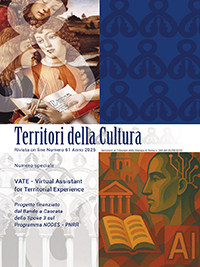Workshop Local risk culture in the Mediterranean: a tool against disasters and for a new kind of ‘education’
Ravello, 24-25 November 2006
Iin the framework of the project “CULTURES against DISASTERS, Preventing natural disasters by re-evaluating Risk Local Cultures “; in cooperation with Council of Europe, CEPRIS, Euro-Mediterranean Centre for Evaluation and Prevention of Seismic Risk (Rabat, Morocco); CRSTRA, Euro-Mediterranean Center on research in arid zones (Biskra, Algeria); ECPFE, European Centre on Prevention and Forecasting of Earthquakes (Athènes, Grèce); BE SAFE NET, European Centre for Disaster awareness with the use of the Internet (Nicosia, Cyprus) (Participants: 20)
Major international institutions recommend to include disaster prevention in durable development projects. Besides it appears quite stock to state that several «natural» disasters have been caused (or increased) by land alterations which have been badly made.
Furthermore we all well know that local communities living in regions which are regularly hit by natural disasters (earthquakes, droughts, floods) developed techniques and behaviours which are effective against those specific risks. That means that regions at risk have necessarily developed their Risk Local Cultures (RLC).
Since traditional local techniques are seldom object of researches or included in university teaching, they gradually become outdated.
Since correct behaviours are not learnt, nor at school nor at home, they are forgotten (a contrariis evidence: during the 2004 tsunami only few young students et an isolated fisher community run away inwards when they saw the sea receding).
Re-evaluating techniques which have been tested by hundreds of disasters occurred during centuries can help handing down important know-hows to future generations as well as preventing disasters and guaranteeing durable development.
The Mediterranean region has undergone rich cultural exchanges and it preserves a very characteristic historical territory.
Traditional techniques (building, agricultural, soil management, etc.) change accordingly to the local available resources, but they are based on the same « rules », therefore they can be identified and classified by means of their comparative analysis.
The risk local cultures are different depending on the local risk and context, but the methodologies to discover them are the same.
Consequently, cooperation among coast countries can produce a multi-directional flow of information and training. In fact trans-Mediterranean cooperation is highly appreciated by national and EEC institutions.
Recognizing traditional techniques – and, in particular, identifying their advantages and potentialities – requires the implication of many subjects (history, material cultures history, agronomics, environment sciences, economics), with a multidisciplinary approach which is considered more and more necessary.
Disasters prevention is considered as an essential element to trigger a durable development process, which entails the implication of all local actors (elected members, entrepreneurs, citizens, etc.) ; therefore the RLC can not be achieved without the local community implication and to prevent natural disasters and to start a durable development process by RLC re-evaluating become possible as well as advisable.
The experience gained by the European University Centre for Cultural Heritage in the field of ancient buildings protection by means of the recuperation of a specific Risk Local Cultural (Local Seismic Culture) over 16 years of research and training, provides the methodological basis to extend the research to other natural disasters (floods, drought) whose impact depends largely on men’s action
Programme of the workshop
Vendredi, 24 Novembre 2006
Accueil de bienvenue (F. Pla, A. Andria )
Cultures locales du risque et territoire historique: problèmes de reconnaissance, de sauvegarde, d’exploitation (F. Ferrigni)
Le tecniche locali : un sapere negletto, una risorsa preziosa (S. D’Agostino)
L’action des Centres EUR-OPA dans la prévention des risques:
- Sismique G. Papadopoulos (ECPFE - Grèce)
- Sismique A. El Mouraouah (CEPRIS- Maroc)
- Désertification F. Lakhdari (CRSTRA - Algérie)
- Glissements de terre et stabilité du sol A. Sursok (CNG-Liban)
- Formation G. Gerosimou (BE SAFE NET- Chypre),
Techniques traditionnelles de prévention des risques naturels dans les pays de la Méditerranée:
- La gestion des eaux au Magreb M. I. Hassani
- Le bâti historic au Maroc O. Hassouni
- Byzantine and postbyzantine antiseismic
constructional techniques :
the Mount Athos monasteries example P. Touliatos
- Les effets du « renforcement » parasismique
en Ombrie A. Cesi
Techniques traditionnelles de prévention des risques: procédures à haute intensité de travail, outils pour le devéloppement humain, défi pour la formation universitaire (L. Carrino - Comité Scientifique ART, S. Swartz (UNDP)
Samedi, 25 novembre 2006
Table Ronde:
La culture locale du risque dans la Méditerranée: un outil contre les désastres, un enjeu pour la formation
Introduction:
Indications et perspectives issues des travaux du workshop (F. Ferrigni)
Participent:
L. Carrino (ART) - A. Cesi (MiBAC) - S. D’Agostino (C.I.Be.C) - E- Fernandez-Galiano (EUR.OPA) - A.Grimaldi (Regione Campania, Assessorato al Bilancio, Tributi e Rapporti con il Mediterraneo) - G. Luongo (Università di Napoli) - M.-P. Roudil (UNESCO)

 English (UK)
English (UK)  Italian (IT)
Italian (IT) 


